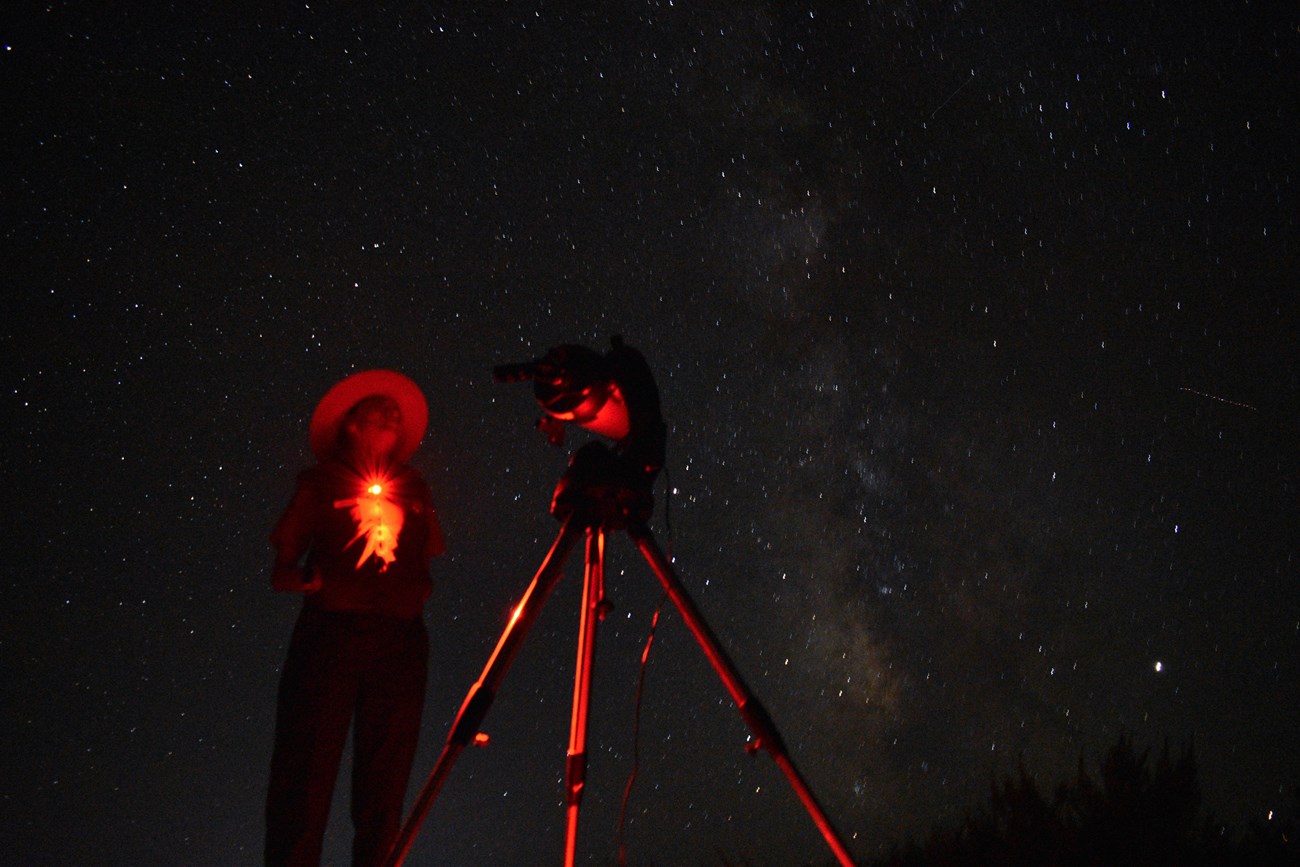Last updated: March 19, 2025
Article
Astronomy

NPS / Jacob W. Frank
The nigh sky is a resource that humans throughout time have looked to as both a mode of navigation and a realm for the spiritual. Constellations and stars have inspired stories and insights across countless cultures over many centuries. There are multiple constellation guides to use: a traditional Ojibwe or Dakota constellation guide, or a Greek-based planisphere. Try them all out and learn something new!

NPS / Martin Tow
Use a Red Light
White lights from flashlights, cell phones, or vehicle headlights can harm your night vision. A red light is much better for stargazing because it won't impact your (and others) night vision as much.
It takes 20-30 minutes for your eyes to adjust to low light, so allow yourself and others this time to enjoy the night sky fully. Cell phones emit white light, so keep them off and tucked away to fully immerse yourself in the moment.
Best Stargazing Conditions
- Clear night, without clouds. Nobody wants to excitedly drive miles and then look up to see the stars are hidden by a cloudy night.
- New moon, before moonrise, or after moonset – the moon and its brightness can impede your ability to see the stars in their multitude. Check the phases of the moon and the moonrise and moonset times.











